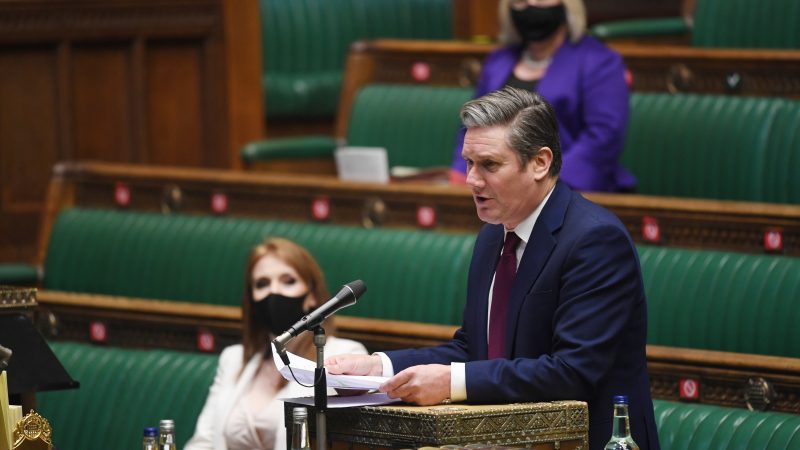
Parts of Keir Starmer’s reshuffle started to leak just before 10pm last night, and the whole new team was unveiled on the hour. It came after a long day of waiting for news while the leadership negotiated with newly strengthened deputy leader Angela Rayner. Sacked as party chair and national campaign coordinator, provoking a loud backlash from MPs, she has manoeuvred herself into the role of Shadow Chancellor of the Duchy of Lancaster, i.e. the post shadowing Michael Gove that Rachel Reeves had been occupying. Because former Bank of England economist Reeves is the new Shadow Chancellor, which came as a huge surprise only to those living under a rock. Anneliese Dodds is now party chair, in a move that seems odd for someone criticised over their communication skills, though her task of chairing Labour’s policy review a lot of sense, helped by the fact she is well-liked across the party.
Post-reshuffle, the shadow cabinet comprises 33 members, 16% of the parliamentary party. This does not include the frontbench, of course, and there will be some changes to junior shadow ministers that have not yet been confirmed. Starmer’s ‘top team’ has become even bigger because there were only two people sacked entirely from it last night: Nick Brown, who has served as chief whip under five different Labour leaders and is being replaced by his deputy, and Valerie Vaz, who was removed as House of Commons shadow leader in favour of Thangam Debbonaire. (Lucy Powell has taken over as Shadow Housing Secretary.) Most were instead moved around, and Wes Streeting did not take the place of Kate Green as some had predicted but got a new role around child poverty at shadow cabinet level.
Who emerges as victorious after these changes on top? Rayner’s allies say she does. “Angela obviously comes out of this significantly more powerful both in terms of the party and policy. She will be much more visible now she isn’t being held back,” one said. Explaining why taking her new role is better than staying in the last, a Labour insider asked: “Who would want to be national campaign coordinator in name only with no power when you’re just made the scapegoat for the failures of Keir’s team?” At the same time, however, the influence of Peter Mandelson is clear. Deborah Mattinson, author of Beyond the Red Wall and queen of focus groups, is Labour’s new director of strategy. Back in the New Labour days, she helped run the ‘shadow communications agency’, set up by Mandelson and Philip Gould.
The reshuffle has not caused tensions to dissipate. Far from it. Although the Labour leader paid tribute to the successes of some candidates when announcing the reshuffle yesterday, some are upset that he has not yet taken to Twitter to celebrate wins or done pool clips from those parts of the country. There is not only the challenge of Labour’s fragmented electoral coalition – there is also the question of how the various forces at the top of the party interact with each other, which is shaped by skilful (or poor) political management. As we have seen over the weekend, this will determine whether Starmer’s leadership is buried under factional infighting before it can reach out to voters.
Sign up to LabourList’s morning email for everything Labour, every weekday morning.



More from LabourList
LabourList Christmas quiz 2025 round 4: Christmas Connects
EXCLUSIVE: A Christmas message from Hollie Ridley
‘Carol of the Bells: Christmas, Ukraine’s resistance and the fight for freedom’